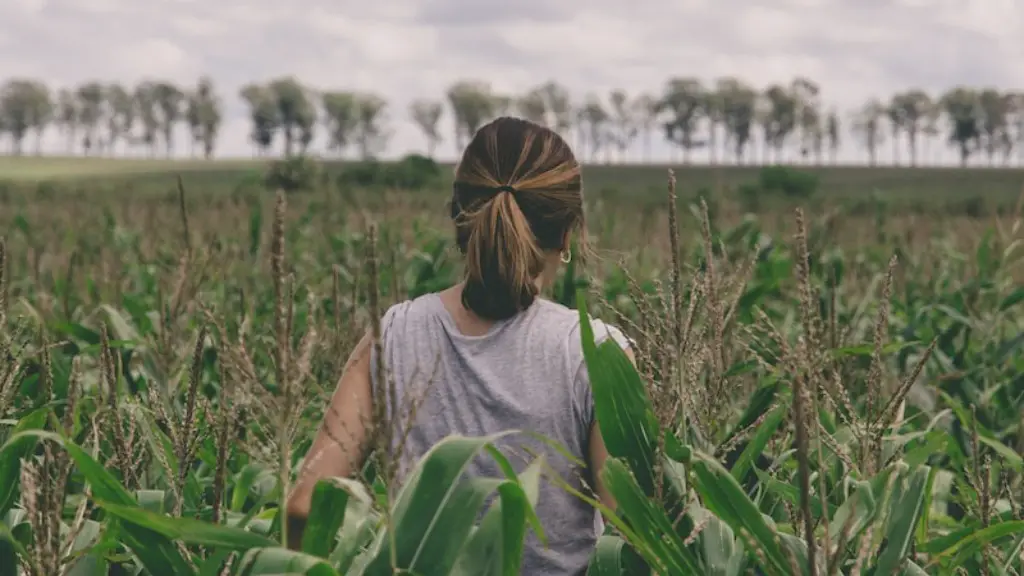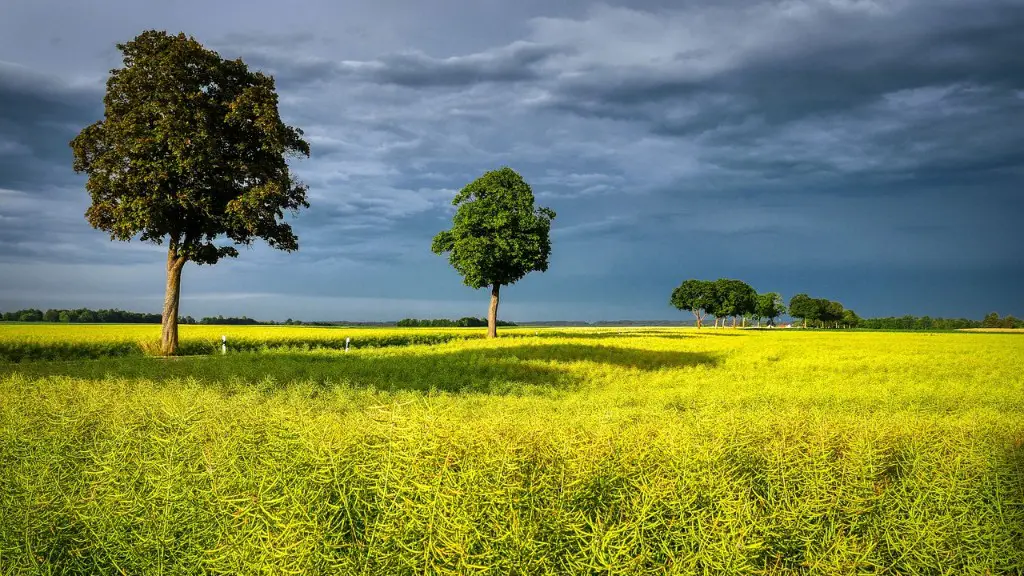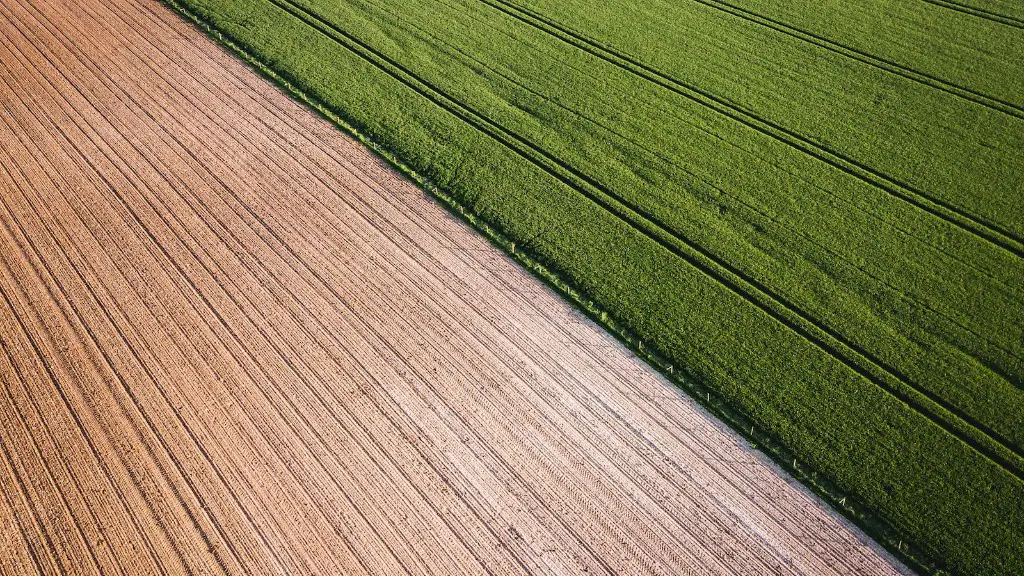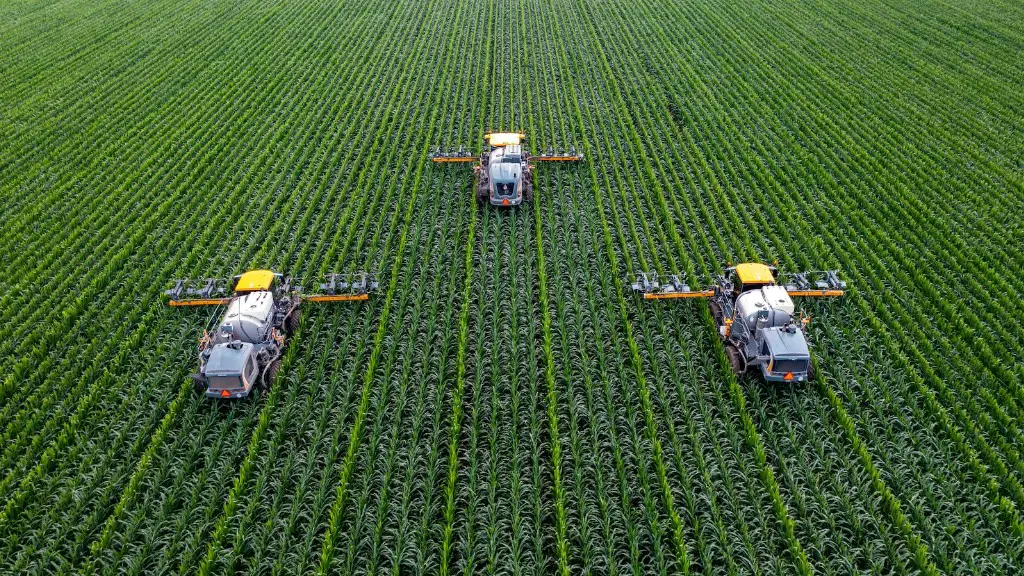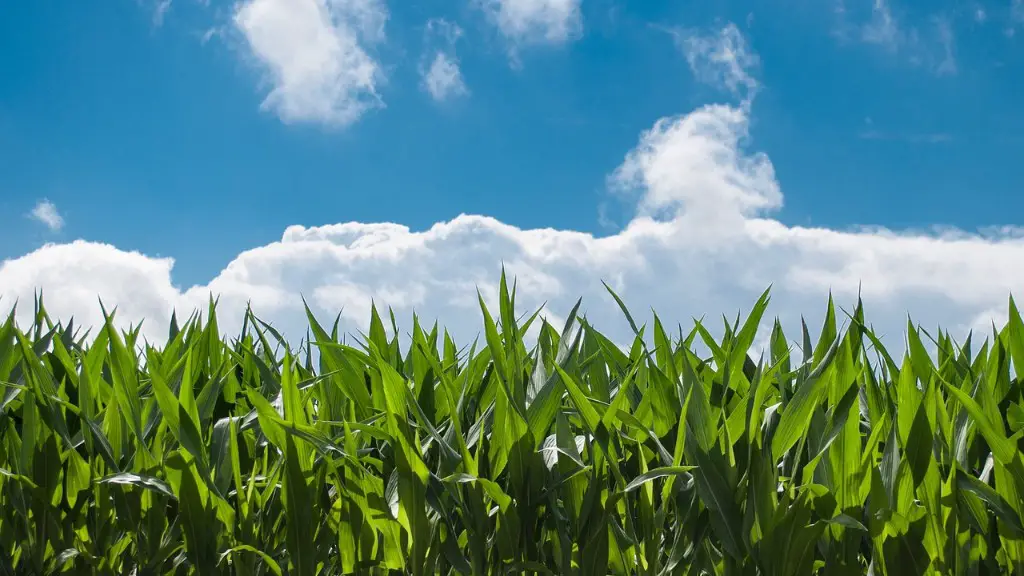Farming and agriculture are responsible for a significant amount of global warming. Greenhouse gases like carbon dioxide and methane are released into the atmosphere when crops are grown and animals are raised. These gases trap heat and cause the Earth’s temperature to rise. Deforestation is also a major contributor to climate change because it removes trees that would otherwise absorb carbon dioxide.
The methane released from agricultural activities is a large contributor to global warming. Methane is a greenhouse gas that has a warming potential over 25 times greater than carbon dioxide over a 100-year period. Rice production, cattle ranching, and manure management are among the agricultural activities that generate methane gas.
How is agriculture affecting global warming?
Agriculture is a significant contributor to anthropogenic global warming, and reducing agricultural emissions—largely methane and nitrous oxide—could play a significant role in climate change mitigation.
Methane and nitrous oxide are two of the most potent greenhouse gases, and their emissions from agriculture are a major contributor to global warming. Reducing these emissions would therefore have a significant impact on mitigating climate change.
There are a number of ways to reduce agricultural emissions, such as improving agricultural practices, developing more efficient agricultural technologies, and changing diets to reduce demand for livestock products. All of these options need to be explored in order to find the most effective and practical solutions for reducing agricultural emissions and mitigating climate change.
The panel of scientists found that agriculture, deforestation, and other land use generates about a third of human greenhouse gas emissions, including more than 40% of methane. They also looked at the climate change effects of these activities and found that they have a significant impact on the environment.
Do farms contribute to global warming
The industrial agriculture industry is a significant source of US greenhouse gas emissions, with myriad activities contributing to the tally. Farm equipment emits carbon dioxide as vehicles move across fields during tilling, planting, pesticide and fertilizer applications, and harvest. Methane and nitrous oxide emissions come from livestock, particularly from cows and pigs. These gases are produced as the animals digest their food and from the decomposition of manure. Fertilizer use is also a significant source of emissions, as the nitrous oxide it releases is 300 times more potent than carbon dioxide as a greenhouse gas.
The way we produce food is a major contributor to climate change, and factory farming is a huge part of that. Factory farms release vast volumes of greenhouse gases, including carbon dioxide and methane, into the atmosphere, intensifying the effects of climate change.
We need to urgently find more sustainable ways to produce food if we’re to avoid the worst impacts of climate change. Factory farming is simply not sustainable in the long run, and it’s time we started looking for alternatives.
Why is farming bad for the environment?
Agriculture is the leading source of pollution in many countries. Pesticides, fertilizers and other toxic farm chemicals can poison fresh water, marine ecosystems, air and soil. They also can remain in the environment for generations.
Toxic farm chemicals can enter the food chain and cause serious health problems in humans. The best way to reduce pollution from agriculture is to switch to organic farming methods.
Agriculture can both positively and negatively impact the environment. On the positive side, agriculture can trap greenhouse gases within crops and soils, or mitigate flood risks through the adoption of certain farming practices. On the negative side, agriculture can lead to pollution and degradation of soil, water, and air.
Is agriculture the biggest polluter?
Agriculture is responsible for 70% of global water use, making it the largest consumer of water. Yet, agriculture is also the world’s biggest polluter of water. How is this possible?
The main reason is that agriculture is a very resource-intensive industry. It takes a lot of land, water, and other resources to produce food. This can put a strain on the environment, leading to pollution.
One of the biggest problems is agricultural runoff. This is when water from rainfall or irrigation carries away pollutants from farms and into rivers, lakes, and oceans. This can contaminate drinking water, damage wildlife, and make swimming and fishing unsafe.
It is estimated that agricultural pollution is responsible for the death of more than 20 million people each year. This is a huge problem that needs to be addressed.
The good news is that there are things that can be done to reduce agricultural pollution. For example, farmers can use more efficient irrigation systems, plant trees to reduce runoff, and use more environmentally-friendly fertilizers.
If we all work together, we can make a difference and protect our planet’s precious water resources.
Fossil fuels are a primary driver of climate change, contributing to nearly 90% of all carbon dioxide emissions. Burning fossil fuels releases greenhouse gases into the atmosphere, which trap heat from the sun and cause the Earth’s temperature to rise. The resulting climate change threatens the health and wellbeing of people and ecosystems around the world. To reduce the impact of climate change, it is essential to reduce our reliance on fossil fuels.
Is farming bad for the climate
While most manmade CO2 emissions come from industrial processes, such as fossil fuel burning, the majority of human-induced CH4 emissions come from agriculture (from livestock, rice cultivation and biomass burning – such as clearing land by burning vegetation).
While the development of agriculture in a region has many positive effects on the natural life, oxygen production, and climate in the region, there are also some negative effects that need to be considered. Inorganic nitrate pollution, pesticide pollution, and salinity problems can all be caused by agriculture, especially in regions where intensive agriculture is practiced. These negative effects can have a significant impact on the environment and on human health, so it is important to be aware of them and take steps to minimize their impact.
What is the biggest problem in agriculture?
The loss of agricultural land and the decrease in the varieties of crops and livestock produced are two of the most major problems in agriculture. Agricultural land is being lost to development and other uses at an alarming rate, and the loss of crop and livestock diversity is making it more difficult for farmers to adapt to changing conditions and produce the food we need.
If you are looking to relocate to Canada, there are a few things you should know. First, Canada is a very modern country with a strong economy. There is also a high level of education and a general lack of ignorance. Additionally, Canada has a strong infrastructure and plenty of social amenities. Finally, Canada is a safe country with little crime and a low rate of natural disasters.
Why is agriculture the biggest mistake
Farming helped bring another curse upon humanity: deep class divisions. Hunter-gatherers have little or no stored food, and no concentrated food sources, like an orchard or a herd of cows: they live off the wild plants and animals they obtain each day. This means that they are constantly on the move, following the food sources. This lifestyle is not conducive to the accumulation of personal possessions, so there is little difference between the wealthiest and the poorest members of the group. Everyone has to work to get food, and there is little surplus.
With the advent of farming, things changed. People could stay in one place and cultivate crops or raise livestock. This allowed for the accumulation of personal possessions and the development of trade. This, in turn, led to the development of social classes, with a small group of people becoming very wealthy while the majority remained poor. This deep divide between the rich and the poor has led to much misery and conflict throughout history.
Carbon dioxide emissions from farm equipment are a significant source of greenhouse gas emissions in the agricultural sector. Tilling, planting, applying pesticides and fertilizers, and harvest all contribute to carbon dioxide emissions from farm equipment. The more passes farm equipment makes across a field, the more carbon dioxide is emitted. Reducing the number of passes farm equipment makes across fields can help to reduce agricultural greenhouse gas emissions.
What are 3 sources of agricultural pollution?
Agricultural pollution to rivers is caused by three main sources: agricultural residues, fertilizers and pesticides, and animal husbandry. Agricultural residues, such as crop straw and animal manure, can contain high levels of nutrients and organic matter which can pollute rivers when they come into contact with water. Fertilizers and pesticides can also runoff from fields and contaminate rivers. Animal husbandry can also pollute rivers, particularly when animals are allowed to graze near riverbanks or when manure is disposed of in rivers. Excess salts from applied irrigation water can also pollute rivers.
There are a number of things that contribute to global warming, including carbon pollution, climate change, and energy. All of these things play a role in the increase of greenhouse gases in the atmosphere, which leads to the trapping of heat and an increase in the Earth’s temperature.
Warp Up
Farming and agriculture are responsible for a large percentage of global greenhouse gas emissions. Agriculture contributes to global warming in a number of ways. The main ways are through:
– deforestation, as trees are cleared to make way for farmland
– livestock production – methane gas is produced by livestock, and this is a powerful greenhouse gas
– fertilizer use – nitrous oxide is produced when fertilizers are used, and this is another powerful greenhouse gas
These are just some of the ways in which farming and agriculture contribute to global warming.
The burning of fossil fuels emits greenhouse gases into the atmosphere, and agriculture and farming contribute to this by burning fossil fuels for energy and by using fertilizer. The fertilizer release methane and nitrous oxide, which are powerful greenhouse gases. Therefore, agriculture and farming play a role in causing global warming.
